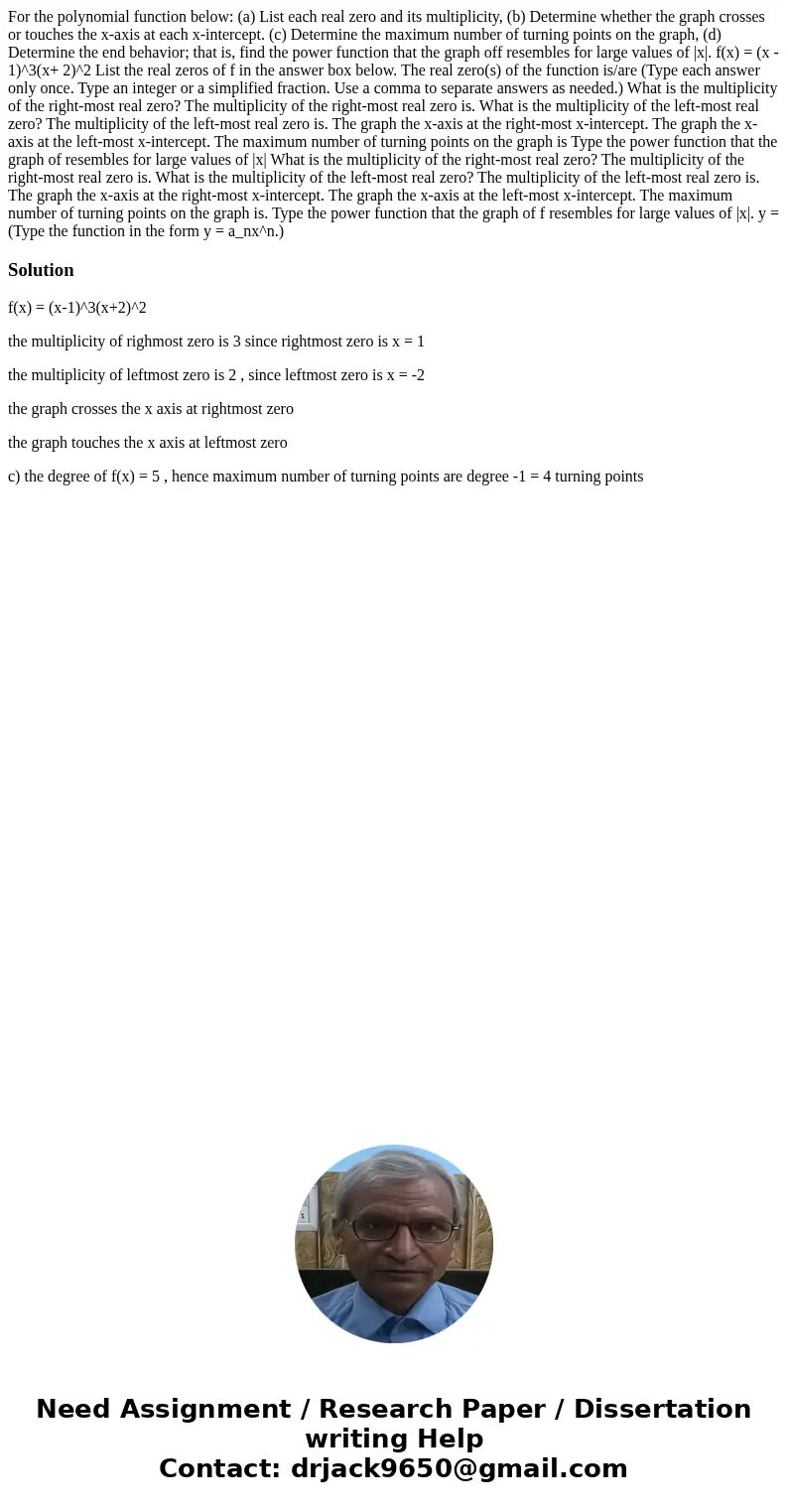For the polynomial function below a List each real zero and
For the polynomial function below: (a) List each real zero and its multiplicity, (b) Determine whether the graph crosses or touches the x-axis at each x-intercept. (c) Determine the maximum number of turning points on the graph, (d) Determine the end behavior; that is, find the power function that the graph off resembles for large values of |x|. f(x) = (x - 1)^3(x+ 2)^2 List the real zeros of f in the answer box below. The real zero(s) of the function is/are (Type each answer only once. Type an integer or a simplified fraction. Use a comma to separate answers as needed.) What is the multiplicity of the right-most real zero? The multiplicity of the right-most real zero is. What is the multiplicity of the left-most real zero? The multiplicity of the left-most real zero is. The graph the x-axis at the right-most x-intercept. The graph the x-axis at the left-most x-intercept. The maximum number of turning points on the graph is Type the power function that the graph of resembles for large values of |x| What is the multiplicity of the right-most real zero? The multiplicity of the right-most real zero is. What is the multiplicity of the left-most real zero? The multiplicity of the left-most real zero is. The graph the x-axis at the right-most x-intercept. The graph the x-axis at the left-most x-intercept. The maximum number of turning points on the graph is. Type the power function that the graph of f resembles for large values of |x|. y = (Type the function in the form y = a_nx^n.)
Solution
f(x) = (x-1)^3(x+2)^2
the multiplicity of righmost zero is 3 since rightmost zero is x = 1
the multiplicity of leftmost zero is 2 , since leftmost zero is x = -2
the graph crosses the x axis at rightmost zero
the graph touches the x axis at leftmost zero
c) the degree of f(x) = 5 , hence maximum number of turning points are degree -1 = 4 turning points

 Homework Sourse
Homework Sourse